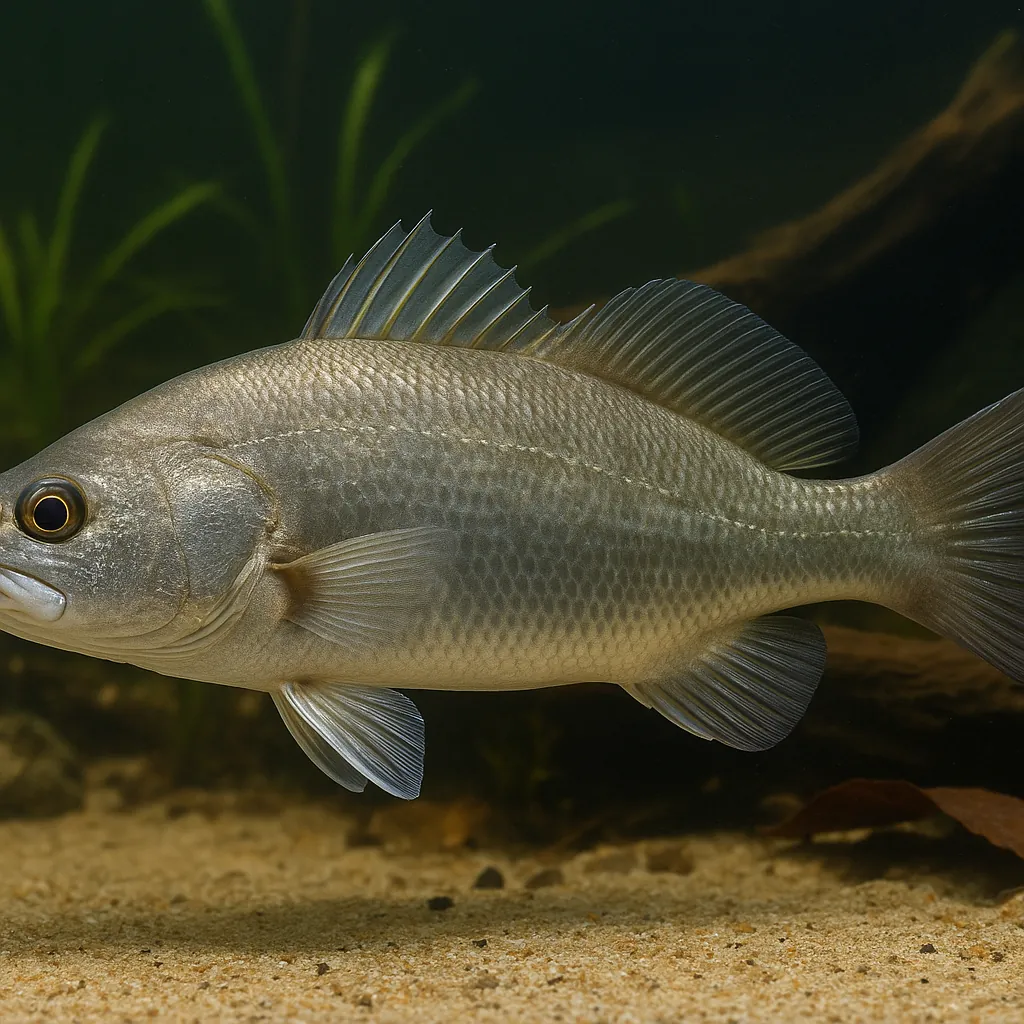
Dewfish
The Dewfish, scientifically known as *Tandanus tandanus*, is a distinctive freshwater species native to Australia. Also referred to as the eel-tailed catfish, this fish is renowned for its unique appearance and substantial size, making it a fascinating addition for experienced aquarists. However, due to its specific care requirements and potential challenges, the Dewfish is best suited for those with a solid understanding of large freshwater fish maintenance.
**What makes the Dewfish unique among freshwater aquarium fish?**
The Dewfish stands out due to its eel-like tail and considerable size, which can reach up to 80 cm (31.5 inches) in length. Its distinctive appearance and behavior make it a captivating species for aquarists seeking something different.
**Is the Dewfish suitable for beginner aquarists?**
Given its large size and specific care needs, the Dewfish is more appropriate for intermediate to advanced fishkeepers who have experience managing large aquariums and maintaining stable water conditions.
**Care and Environment**
Caring for the Dewfish requires attention to several key aspects to ensure its health and well-being.
**What is the minimum tank size required for a Dewfish?**
A single Dewfish requires a minimum tank size of 500 liters (approximately 130 gallons) to accommodate its potential growth and activity levels.
**What are the ideal water parameters for keeping a Dewfish?**
Maintain water temperatures between 15–25°C (59–77°F), a pH range of 6.4–7.5, and water hardness between 10–18°N (178.57–321.43 ppm) to replicate the Dewfish's natural habitat.
**How should the tank be set up for a Dewfish?**
Use a sandy substrate and provide ample hiding spaces with rocks and driftwood. Ensure robust filtration to maintain high water quality and accommodate the Dewfish's large bioload.
**What should I feed my Dewfish?**
Dewfish are carnivorous and thrive on a diet of meaty foods such as earthworms, chopped liver, and brine shrimp. Supplement their diet with high-quality pellets or flakes to provide balanced nutrition.
**Are there any specific challenges in keeping Dewfish?**
Dewfish have sharp fin spines that can cause painful injuries. Exercise caution when handling these fish or performing tank maintenance to avoid accidental contact.
**Origin and Habitat**
The Dewfish is native to Australia, inhabiting a wide range of freshwater ecosystems, including rivers, streams, and lakes. These environments are characterized by varying flow rates, vegetation, and substrates, highlighting the species' adaptability.
**Where can Dewfish be found in the wild?**
Dewfish are found throughout various freshwater systems in Australia, from slow-moving rivers to fast-flowing streams and expansive lakes.
**What type of environments do Dewfish prefer?**
They thrive in habitats with sandy or muddy substrates, ample vegetation, and varying flow conditions, which provide both shelter and feeding opportunities.
**How does the natural habitat of the Dewfish influence its care in captivity?**
Understanding the Dewfish's natural habitat helps aquarists replicate similar conditions in captivity, such as providing appropriate substrate, hiding spots, and water flow to ensure the fish's comfort and health.
**Temperament and Compatibility**
Dewfish exhibit specific behaviors that influence their compatibility with other tank inhabitants.
**Are Dewfish peaceful or aggressive?**
While generally peaceful toward their own kind, Dewfish can be aggressive toward smaller tankmates and may exhibit predatory behavior.
**Do Dewfish prefer to be kept alone or in groups?**
Dewfish can be kept singly or in groups, but if housed together, ensure the tank is spacious enough to prevent territorial disputes.
**What are suitable tank mates for Dewfish?**
Suitable companions include other large, non-aggressive fish species. Avoid housing them with small or delicate fish to prevent predation or stress.
**Interesting Facts**
The Dewfish possesses several intriguing characteristics that enhance its appeal to aquarists.
**What is unique about the Dewfish's appearance?**
Its eel-like tail and substantial size make the Dewfish a standout species in large freshwater aquariums.
**How do Dewfish reproduce in captivity?**
Breeding in captivity is challenging but possible. The male constructs a nest from the substrate, and the female lays up to 20,000 eggs in a single spawning. The male guards the eggs, which hatch after approximately seven days.
**What is the typical lifespan of a Dewfish in an aquarium?**
In aquariums, Dewfish typically live for 3–4 years. Providing a spacious environment, a suitable diet, and stable water conditions can help maximize their lifespan.
**Sources**
All information in this article has been gathered from the following reputable sources:
- en.aqua-fish.net
Overview
Recommended Tank Size 132.1 Gallons (suitable for a single Dewfish) |
Minimum Group Size 1 |
Minimum Tank Volume 132.1 Gallons |
Maximum Adult Length 31.5 inches |
Average Adult Length 23.6 inches |
Shoaling (6+ required) No |
Preferred Water Type Freshwater, slightly acidic to neutral pH |
Temperature Range (°C) 15–25 |
pH Range 6.4–7.5 |
Water Hardness (dGH) 10–18 |
Typical Lifespan (years) 3 years |